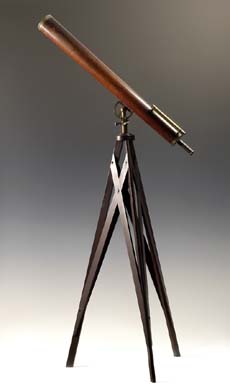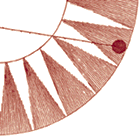Traditional refracting telescopes (using lenses) suffered from several well-known optical problems. The choice of reflecting telescopes for most of the British expeditions arose both from their compact size and also their freedom from aberrations.
.
However, at the time of the 18th-century transits, a new form of refracting telescope had just been introduced. John Dollond’s achromatic refractors were announced in 1758, and solved one of the key optical problems. They were adopted rapidly, many more being used to observe the transit of 1769 than 1761.
.
Achromatic refractors of the size and type seen here by Dollond were used for the 1769 transit in Oxford, although this example comes from The Queen's College rather than Brasenose.
.
 |
 |





